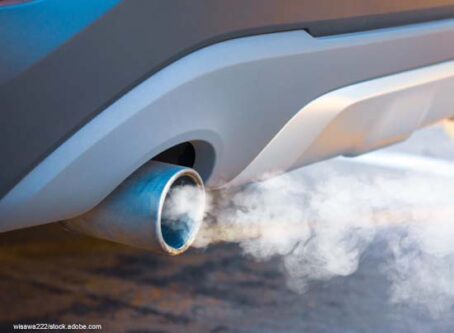Federal report affirms OOIDA’s stance on driver shortage
While certain groups are pushing a “driver shortage” narrative to mainstream media, recent research published by the U.S. Bureau of Labor Statistics suggests otherwise. BLS’ report argues that the trucker driver market is working just as well as other blue-collar job markets, which can be solved by increasing wages.
Earlier this month, BLS published research titled “Is the U.S. Labor Market for Truck Drivers Broken?” Responding to reports from trade press coverage and claims from the American Trucking Associations, researchers looked into whether a driver shortage is real or perceived.
BLS concluded that the evidence does not support the theory of a labor shortage within the trucking industry and that increasing wages could alleviate any issues with recruitment and retention.
“As a whole, the market for truck drivers appears to work as well as any other blue-collar labor market, and, while it tends to be ‘tight,’ it imposes no constraints on entry into (or exit from) the occupation,” the report states. “There is thus no reason to think that, given sufficient time, driver supply should fail to respond to price signals in the standard way.”
While ATA has been at the forefront of pushing the “driver shortage” narrative, the Owner-Operator Independent Drivers Association has always maintained that the issue is a lack of pay, not drivers.
Wages
According to the report, a labor shortage in any market is generally alleviated in the short term by wage increases. In the long term, the shortage is corrected through the influx of new employees in response to higher wages.
When evaluating earning, drivers are broken down into two groups: heavy truck drivers and all truck drivers (including light trucks, delivery, and so forth). When both groups are compared to all other blue-collar workers’ earnings, truck drivers in general earn less. However, drivers of heavy trucks earn more than the average blue-collar worker.
As expected, people with higher weekly earnings are less likely to leave driving. Chances of a for-hire driver leaving decreases by 16% with increased wages, compared with 25% for private carriage drivers.
Data showed that workers coming into trucking were generally making less money. This suggests that people entered the industry to earn more money than they were initially making. An expectation of an earnings gain increases the likelihood of entering a driving job in for-hire transportation by 29%.
The study also points to the trucking industry lagging pricing response to a positive demand shock. More specifically, since much of the freight is hired under contracts, freight rates do not adjust upward quickly. According to the report, this has happened at least twice since the recession, once in 2014 and again in 2018.
Hours
Work hours also play a role in employment. Researchers found the difference in expected hours is related to the likelihood of leaving trucking, both for-hire and private carriage jobs.
Odds of leaving trucking for a one-hour increase go up by 3% with for-hire truckers and 1 percent for private carriage drivers.
Data showing who was coming into trucking reveal workers were putting in longer hours at their previous job, making the relatively long hours of driving more tolerable. The longer the hours of a job, the less likely the job will be filled.
Also mentioned is the fact that interstate transportation jobs are not subject to the Fair Labor Standards Act’s overtime provisions. Researchers note that federal hours-of-service regulations not only limit time worked, but also disqualifies drivers from earning time-and-a-half for working more than 40 hours a week. Most tractor-trailer drivers work far in excess of 40 hours per week.
“Accounting for the fact that hours tend to be relatively high in truck driving, we find nothing surprising about how economic incentives appear to work in this labor market,” researchers said.
Retention
Regarding the term “driver shortage,” researchers suggest a more accurate description would be a “tight” labor market, which can be indicated by:
- Increasing wages relative to alternative employment opportunities for potential job seekers.
- Lower unemployment rates than in alternative employment opportunities.
- Employment levels that are either rising or holding steady, but not falling.
As to the last point, trucking employment has more or less stabilized over the past 14 years. Compared with other blue-collar employment, trucking demand has remained strong while demand for other blue-collar workers has declined substantially in other sectors.
In fact, the research showed that private carriage drivers are substantially less likely to remain truck drivers one year later compared with for-hire drivers, who are more likely to be involved in long-haul truckload driving. Over the studied timespan, approximately 82% of for-hire drivers remained in that job position. Conversely, only 71 percent of private carriage drivers kept their job.
After accounting for other factors, the overall “migration” pattern for all truck driving types is similar to that for workers in the overall economy.
Addressing the turnover rate that averaged as high as 94% for large carriers, researchers pointed out that working conditions and pay play a role.
“The persistently high turnover presents truckload-segment managers, who employ between one-sixth and one-fourth of all heavy and tractor-trailer truck drivers, with a real business problem: managing recruitment and retention when many individuals entering the occupation in this specific part of the trucking industry find the working conditions and earnings to be unattractive,” the report states.
Large carriers may perceive a driver shortage as a result of a highly competitive market, similar average costs across all scales of productions and a limited ability to differentiate prices. Consequently, certain carriers are “forced to accept high turnover as a cost-minimizing response to their competitive position in the market for their outputs.”
“This finding suggests that the market for truck drivers works about as well as that for other blue-collar occupations, and that, broadly speaking, we should expect that if wages rise when the labor market for truck drivers is too tight, the potential for any long-term shortages will be ameliorated,” the study states.









